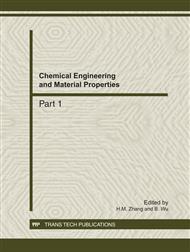p.917
p.922
p.926
p.931
p.935
p.940
p.945
p.950
p.955
Effect of Doping Cation Valencies on Low Temperature Performance of LiFePO4/C
Abstract:
The doped and undoped LiFePO4/C samples are prepared by two-step solid-state reaction. The X Ray Diffraction (XRD) results indicate that metal ions are successfully doped in LiFePO4 without any unexpected phase. The Scanning Electron Microscope (SEM) shows that the particle morphologies of samples are near-spherical with about 200-300nm size which can be observed in all samples. The electrochemical tests indicate that doping oversize ions will increase electrode polarization. The limitation of the Li+ migration is intensified by doping metal ions with high valence. LiFePO4/C samples doped with Mn2+ and Ti4+ behave better at low temperature, especially the one doped with Ti4+. Battery with this Ti4+ doped material can yield 77mAhg-1 when discharge at -20°C and 0.5C, about 26mAhg-1 higher than the undoped one.
Info:
Periodical:
Pages:
935-939
Citation:
Online since:
December 2011
Authors:
Keywords:
Price:
Сopyright:
© 2012 Trans Tech Publications Ltd. All Rights Reserved
Share:
Citation:


